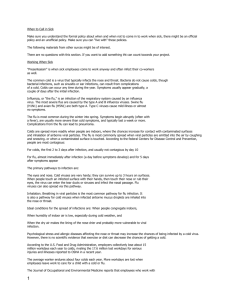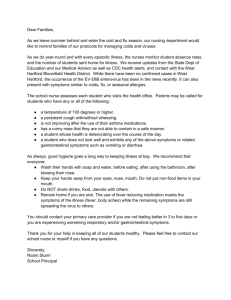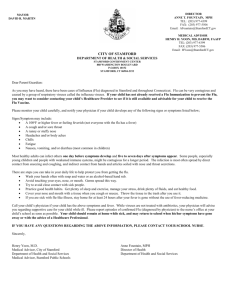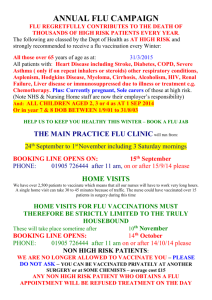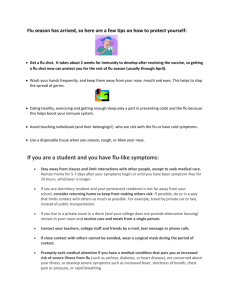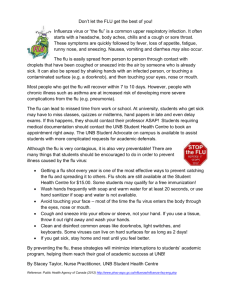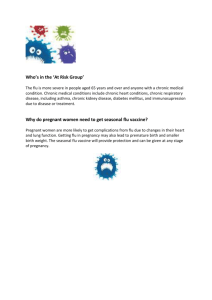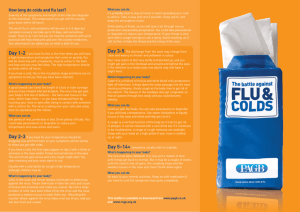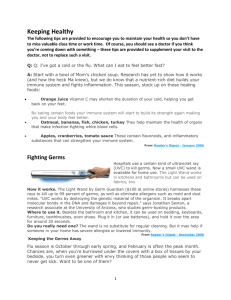Ohio Safety Newsletter October
advertisement
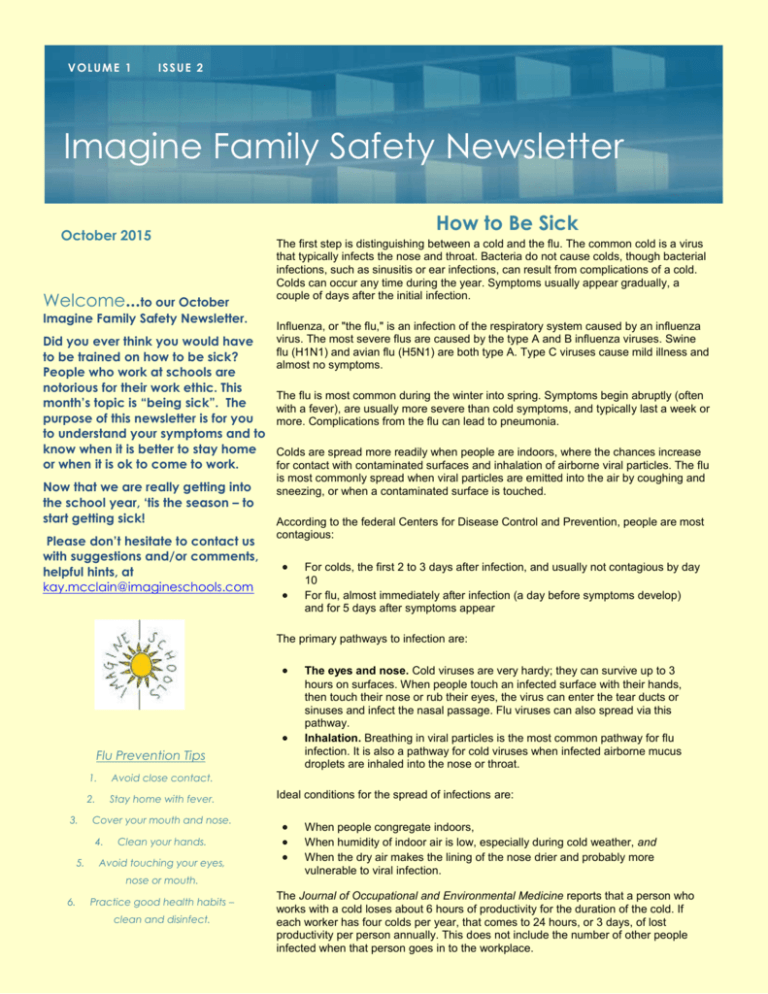
VOLUME 1 ISSUE 2 Imagine Family Safety Newsletter October 2015 Welcome...to our October Imagine Family Safety Newsletter. Did you ever think you would have to be trained on how to be sick? People who work at schools are notorious for their work ethic. This month’s topic is “being sick”. The purpose of this newsletter is for you to understand your symptoms and to know when it is better to stay home or when it is ok to come to work. Now that we are really getting into the school year, ‘tis the season – to start getting sick! Please don’t hesitate to contact us with suggestions and/or comments, helpful hints, at kay.mcclain@imagineschools.com How to Be Sick The first step is distinguishing between a cold and the flu. The common cold is a virus that typically infects the nose and throat. Bacteria do not cause colds, though bacterial infections, such as sinusitis or ear infections, can result from complications of a cold. Colds can occur any time during the year. Symptoms usually appear gradually, a couple of days after the initial infection. Influenza, or "the flu," is an infection of the respiratory system caused by an influenza virus. The most severe flus are caused by the type A and B influenza viruses. Swine flu (H1N1) and avian flu (H5N1) are both type A. Type C viruses cause mild illness and almost no symptoms. The flu is most common during the winter into spring. Symptoms begin abruptly (often with a fever), are usually more severe than cold symptoms, and typically last a week or more. Complications from the flu can lead to pneumonia. Colds are spread more readily when people are indoors, where the chances increase for contact with contaminated surfaces and inhalation of airborne viral particles. The flu is most commonly spread when viral particles are emitted into the air by coughing and sneezing, or when a contaminated surface is touched. According to the federal Centers for Disease Control and Prevention, people are most contagious: For colds, the first 2 to 3 days after infection, and usually not contagious by day 10 For flu, almost immediately after infection (a day before symptoms develop) and for 5 days after symptoms appear The primary pathways to infection are: Flu Prevention Tips 3. 1. Avoid close contact. 2. Stay home with fever. Cover your mouth and nose. 4. 5. Clean your hands. Avoid touching your eyes, nose or mouth. 6. Practice good health habits – clean and disinfect. The eyes and nose. Cold viruses are very hardy; they can survive up to 3 hours on surfaces. When people touch an infected surface with their hands, then touch their nose or rub their eyes, the virus can enter the tear ducts or sinuses and infect the nasal passage. Flu viruses can also spread via this pathway. Inhalation. Breathing in viral particles is the most common pathway for flu infection. It is also a pathway for cold viruses when infected airborne mucus droplets are inhaled into the nose or throat. Ideal conditions for the spread of infections are: When people congregate indoors, When humidity of indoor air is low, especially during cold weather, and When the dry air makes the lining of the nose drier and probably more vulnerable to viral infection. The Journal of Occupational and Environmental Medicine reports that a person who works with a cold loses about 6 hours of productivity for the duration of the cold. If each worker has four colds per year, that comes to 24 hours, or 3 days, of lost productivity per person annually. This does not include the number of other people infected when that person goes in to the workplace.
